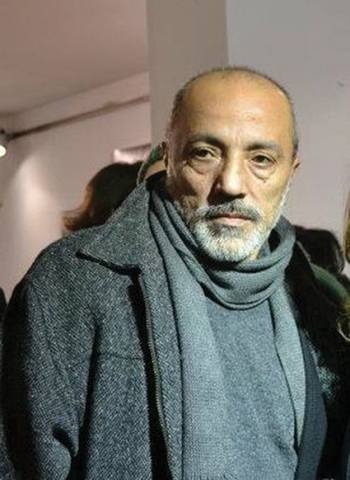An Ear for Talent: Shalva Matuashvili
Shalva Matuashvili, whose works are kept in the Georgian National Museum and Tretyakov Gallery in Moscow, as well as museums and private collections in Tokyo, Milan, Paris, Berlin, and New York, is one of the most luminous representatives of the contemporary Georgian art scene.
GEORGIA TODAY continues to present famous Georgian Artists together with BI Auction. For this issue, we met with Shalva Matuashvili to talk about his artistic inspiration, the influences that defined him as a painter and his secrets of the craft.
How did you choose to become an artist?
I studied at the secondary school in Tsinandali, Kakheti, and had a wonderful teacher, Giorgi Elizbarashvili, who suggested that my mother take me to the Art School in Telavi. I guess he saw some seeds of talent in me, although I can’t say there was anything special in my paintings when I was a child, maybe I drew just a little better than others. Before the fifth grade, I was studying to play violin, but then moved to the Telavi Children’s Art School to focus on drawing.
I can say that school was one of the best in the country, with a four-year study program. After graduation, I came to Tbilisi and entered the Iakob Nikoladze Art College with the highest marks among all students who entered. Then I returned to Tsinandali, finished school and studied at the Tbilisi Academy of Arts, where, to be honest, I didn’t get the best grades on the entrance exams. It turned out to be quite difficult. While I was good with composition, I wasn’t particularly good at drawing portraits, nude figures or torsos. I never took private classes with teachers, and it was during the exams that for the first time I had to draw a nude. It was quite challenging. Even if you’re talented and you can feel a silhouette, there are of course other components you need to know, which I didn’t at that time. The first two years were spent assimilating and “getting to know the city”. I was living alone, in a way, it was a period of finding what to start and how to do it. By the fourth year at the Academy, I had become one of the best students.
Where do you usually find inspiration?
Love is always the major inspiration. It’s where the impulse comes from. It may be love of life, or love and admiration of the outside world, a certain landscape, love of a woman... It wouldn’t be correct to say that the process of creating the work of art is related to one particular thing. Rather, it’s a combination of an accumulated experience, skill, feel for color, which sometimes may be so overwhelmingly strong it can even make you tremble. I’m not saying I’m an exception, every true artist probably feels the same. Sometimes, a detail that I worked on seven or eight years ago may suddenly reappear in a completely different coloristic revelation. In general, I think the art of painting unites many things in itself. You have to have “a good ear;” you have to feel the silhouette very well, the mass, the body. Painting is a craft to a large extent; it’s crucial, and you have to learn to master it. I once said that I would still be a painter even if born on a deserted island, it’s something so deeply rooted inside me. I feel bad, physically, if I’m not working.
Which art movements influenced or defined you as an artist?
Time often changes our tastes. However, there is usually a certain axis, although first you have to discover what axis that is. I think, from today’s perspective, what brought me where I am now is the Venetian school of painting. It influenced me the most. I adore Paul Gauguin, too, and I think he can be considered a successor of the Venetian School. I consider Titian (Tiziano Vecellio) the greatest artist of all. All the Venetian school painters; Giorgione, Giovanni Bellini and all the others. The Venetian and Florentine schools always competed; Michelangelo famously said about Titian that he didn’t know how to draw. Four Schools were competing to be the best: Padua, Siena, Venetian and Florentine. For me, the Venetian painting tradition is an absolute culmination of the art of painting at its best, be it the understanding and creation of form, the feel for material, bringing it to the canvas… it’s magical. For me, the Renaissance painters, to say nothing of Greek sculptors before that, are gods that left an incredible, immeasurable artistic heritage for us.

If you look back at your career, your art, how much has it changed?
There are painters who try to develop something they have already found, and I don’t see anything bad in that, and sometimes I even envy them, but for me, I’d say I’m always on the look-out for something new. I question which route is the right one. Because what is creativity? It’s the ability to listen to your inner voice. In different periods throughout my career, I admired the art of Rogier van der Weyden, while I’m more into the southern tradition of painting and art in general.
Why is Georgian Art not as vibrant as it was before?
I think that everything is built on spirituality. Unfortunately, we greatly lack that today.
In one of your interviews you said that it hurts when the exhibition is over. Why?
Indeed, it’s very painful to me and I’m speaking honestly … I put all my heart and soul into my works, and if the opening of an exhibition is a celebration, the end of it hurts, metaphorically speaking it’s like life and death. As an artist, you draw because you have something to say, something that moves and affects you emotionally; something that inspires and thrills you.
Nino Gugunishvili











